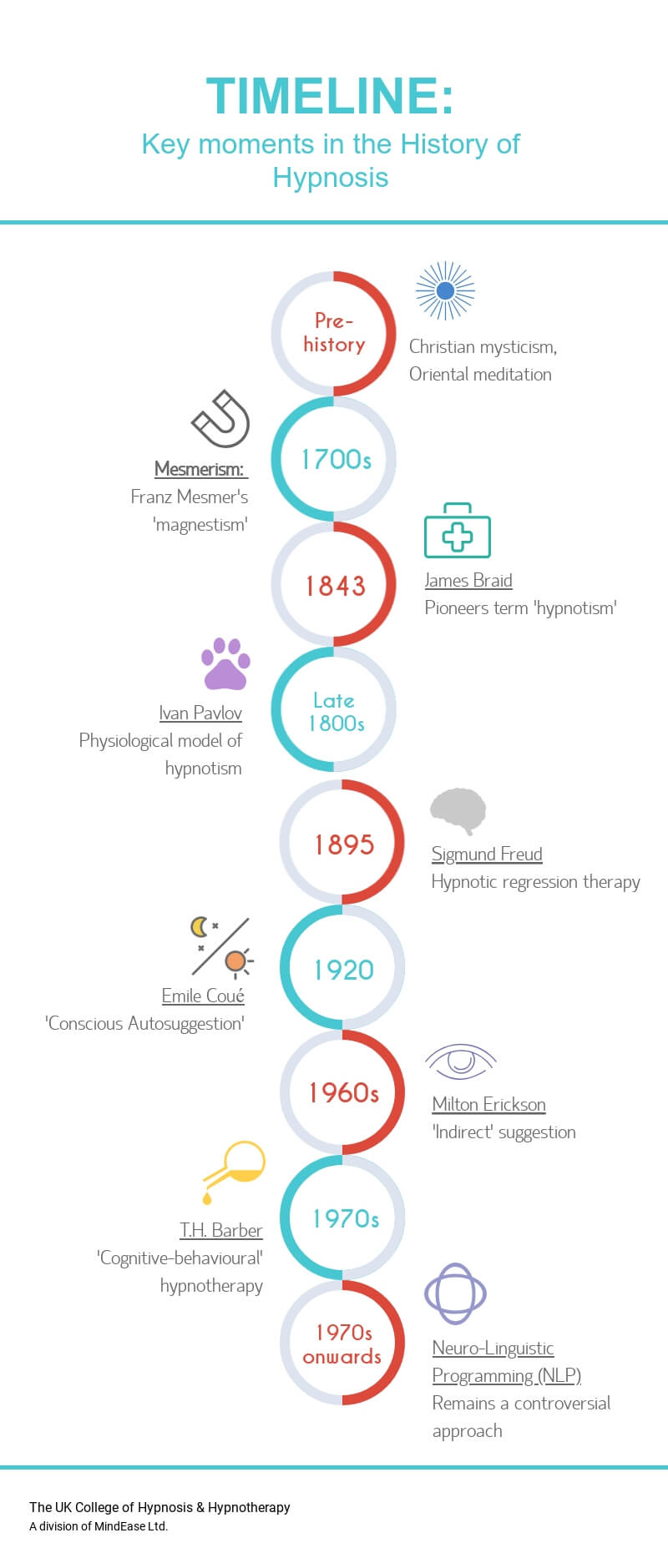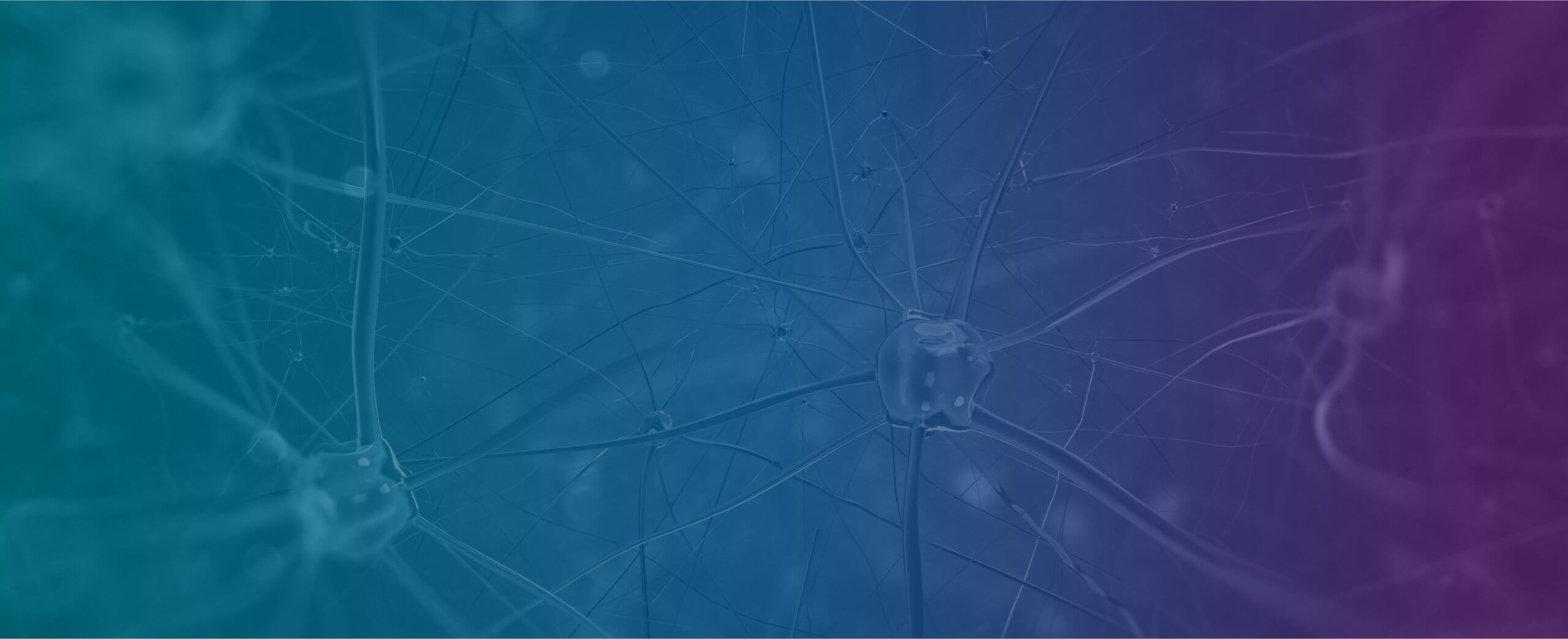- Last Updated
- Posted by
- Hypno-CBT (Cognitive Behavioural Hypnotherapy), Hypnosis, Hypnotherapy, Philosophy
Copyright (c) Donald Robertson, 2009
Last updated: 25 July 2019
This is one of the most valuable posts on our website; Donald Robertson's concise outline of the historical trajectory of hypnosis provides key summative learning material for our students.
It is equally as valuable to anyone in the wider public curious about the formative figures and origins of hypnosis.

Prehistory
The roots of hypnotism can arguably be traced in many philosophical, religious, or therapeutic traditions in different countries and eras, e.g., Christian mysticism, Oriental meditation, and Western philosophies such as Stoicism and Pythagoreanism. James Braid considered Indian yogic meditation to be an important precursor of his approach, possibly sharing more in common with hypnotism than did Mesmerism, its immediate predecessor.
Franz Anton Mesmer (1734 – 1815)
Mesmer drew upon theories regarding healing by magnetism, going back to Paracelsus, to develop his concept of “animal magnetism”, the main precursor of hypnotism. However, Mesmer himself never hypnotised anyone but believed he healed by channeling a kind of supernatural “magnetism” into his patients’ bodies which seemed capable of inducing an “emotional crisis.” His theory and practices were adopted and modified by many followers. After Mesmer moved to France, his methods became the object of several investigations by scientific committees which pronounced against his theory of animal magnetism, concluding instead that the effects were due to belief and imagination.
Armand-Marie-Jacques de Chastenet, Marquis de Puységur (1751 – 1825)
Mesmer’s follower, the Marquis de Puységur, began attempts to induce a state called “artificial somnambulism” in his patients instead of emotional crises. Although he still conceived of this as a kind of supernatural process, the induction of a sleep-like state prefigured the later methods of hypnotism.
John Elliotson (1791 – 1868)
By far the most influential English Mesmerist, Elliotson, a professor of medicine at the University of London, was also an aggressive opponent of Braid and hypnotism. Elliotson founded and edited the Mesmeric journal The Zoist became embroiled in a fierce debate with Thomas Wakely, editor of the Lancet, who accused him of being a charlatan after a series of experiments using his main demonstration subjects, the Okey sisters, failed to support his claims regarding animal magnetism.
James Braid (1795 – 1860)
Braid was a passionate critic of Mesmerism which he saw as a pseudoscientific and supernatural theory. He modified the techniques of the Mesmerists and coined the terms “hypnotism” and “hypnotic therapeutics” to describe his approach, which worked through focused attention and suggestion rather than postulating any mysterious force such as animal magnetism. Braid is therefore normally considered to be the pioneer of hypnotism as opposed to Mesmerism.
Ambroise-Auguste Liébeault (1823 – 1904)
Liébeault emphasised the psychological power of suggestion and combined elements of Braid’s hypnotism with later Mesmerism. He founded the influential Nancy School of hypnotism along with Bernheim.
Jean-Martin Charcot (1825 – 1893)
Charcot, sometimes referred to as the father of modern neurology, focused on the notion of hypnotism as a physiological state found in pathological conditions (hysteria). His ideas were more influenced by Mesmerism and Braid’s early writings than by the later Braid. His “Paris School” became embroiled in a fierce debate with the Nancy School of Bernheim, which Bernheim ultimately won. Charcot’s views on hypnotism have been widely dismissed as incorrect.
Hippolyte Bernheim (1840 – 1919)
Bernheim became a follower of Liébeault whose methods he adopted and developed in several books. Bernheim added great credibility to the psychological model of hypnotism and revived interest in Braid’s legacy in contrast to Mesmerism.
Ivan P. Pavlov (1849 – 1936)
The Nobel Prize-winning physiologist, Pavlov’s experiments on conditioned reflexes in animals concluded with a theory of human psychopathology and psychotherapy, based on a physiological model of hypnotism. Pavlov’s views were not particularly influential in the West but, along with the hypnotherapy taught by Bekhterev, became the basis of Soviet psychotherapy for several decades.
Sigmund Freud (1856 – 1939)
Freud briefly attended lectures by both Charcot and Bernheim and translated some of Bernheim’s writings on hypnotism from French into German. His first book Studies on Hysteria (1895), co-authored with Josef Breuer, popularised the concept of hypnotic regression therapy, although Freud subsequently abandoned hypnotism in favour of his own “psychoanalytic” method.
Emile Coué (1857 – 1926)
Coué worked briefly as an assistant in Liébeault’s hypnotic clinic before gradually developing his own contrasting theory of “Conscious Autosuggestion.” After Liébeault’s death, he announced the founding of the New Nancy School which placed greater emphasis upon self-help by training clients in the use of autosuggestion, he abandoned any claim to induce a sleep-like state or trance. Coué became something of a celebrity and toured Europe and America giving seminars on his self-help method.
Pierre Janet (1859 – 1947)
Janet was a French psychiatrist and philosopher of mind who trained with Charcot. He is held in high regard today as a pioneer of psychotherapy. Janet coined the term “subconscious” and emphasised the concept of psychological dissociation. His method of psychotherapy centred on the use of hypnotism and his views greatly influenced later psychotherapists.
Clark L. Hull (1884 – 1952)
Hull was president of the American Psychological Association and one of the most influential figures in behavioural psychology. Early in his career, his research team carried out a systematic programme of laboratory research on hypnotism published in Hypnosis & Suggestibility (1933) which is widely regarded as the first major scientific text on hypnosis. His work inspired subsequent psychological researchers to investigate hypnosis.
Milton Erickson (1901 – 1980)
Erickson is generally considered by practising hypnotherapists to be the most influential hypnotist of the 20th century, although his impact upon scientific research on hypnosis has been less significant. He is credited with developing the use of “indirect” suggestion in hypnotherapy to a much greater extent than earlier authors and thereby founding a distinct (“Ericksonian”) tradition within the field of hypnotherapy.
Ernest Hilgard (1904 – 2001)
Hilgard was an eminent psychologist, professor at Stanford University, who developed the Stanford Hypnotic Susceptibility Scales along with his colleague Weitzenhoffer. Hilgard developed the “neo-dissociationist” theory of hypnosis and was an authority on hypnotic pain control.
André Weitzenhoffer (1921 – 2004)
Weitzenhoffer worked on hypnosis research with Ernest Hilgard and published many studies and the influential textbook The Practice of Hypnotism. Weitzenhoffer considered Bernheim to be the true father of modern hypnotherapy and was a critic of Ericksonian and cognitive-behavioural approaches to hypnotism.
Theodore Sarbin (1911 – 2005)
Sarbin, known as “Mr. Role Theory”, developed one of the earliest hypnotic susceptibility scales (the Friedlander-Sarbin Scale) and carried out scientific research on hypnosis from the 1930s. He was one of the earliest pioneer of the nonstate theory of hypnosis which he interpreted using the social psychological concept of role-taking. Sarbin’s research on hypnosis greatly inspired later “cognitive-behavioural” theories of hypnosis.
Martin T. Orne (1927 – 2000)
Professor of psychiatry and psychology at the University of Pennsylvania, Orne's influential research on social “demand characteristics” and hypnosis drew upon elements of both state and nonstate perspective on hypnosis. Orne was a pioneer of research into false memory and warned against the risk of hypnosis distorting recall, especially when used in police investigations. He was for several decades editor of the most important journal in the field, The International Journal of Clinical & Experimental Hypnosis.
Theodore X. Barber (1927 – 2005)
Barber was one of the most prolific researchers in the field of hypnosis. He developed a nonstate approach, influenced by Sarbin, called the “cognitive-behavioural” theory of hypnosis. Barber and his colleagues produced a large body of scientific evidence in favour of their view that hypnosis was not a “special state” or trance but rather the result of ordinary psychological processes involving cognition and behaviour such as imagination, motivation, and expectation.
Neuro-linguistic Programming (NLP)
In the 1970s, a controversial theory of inter-personal influence and self-help called neuro-linguistic programming (NLP) was developed by Richard Bandler, John Grinder, and their associates. Bandler and Grinder claimed that their theory and practice modelled the skills of various individuals including Milton Erickson, although this has been disputed by authorities such as Weitzenhoffer. NLP itself is not usually considered a branch of hypnotism, although many hypnotherapists employ NLP. However, NLP has failed to find much support in the research literature following a series of systematic reviews in the 1980s which cast doubt on some of its central claims and controversy still surrounds certain aspects of the approach.
Nicholas P. Spanos (1942 – 1994)
Spanos was another prolific researcher who carried on the nonstate tradition of Sarbin and Barber and developed methods of “hypnotic skills training” which aimed to increase subjects’ responsiveness to hypnotism by training them according to established socio-cognitive principles, such as role-modelling and trial-and-error learning, etc. His protocol, developed at Carleton University where he was a professor of psychology, is known as the Carleton Skills Training Programme (CSTP).

